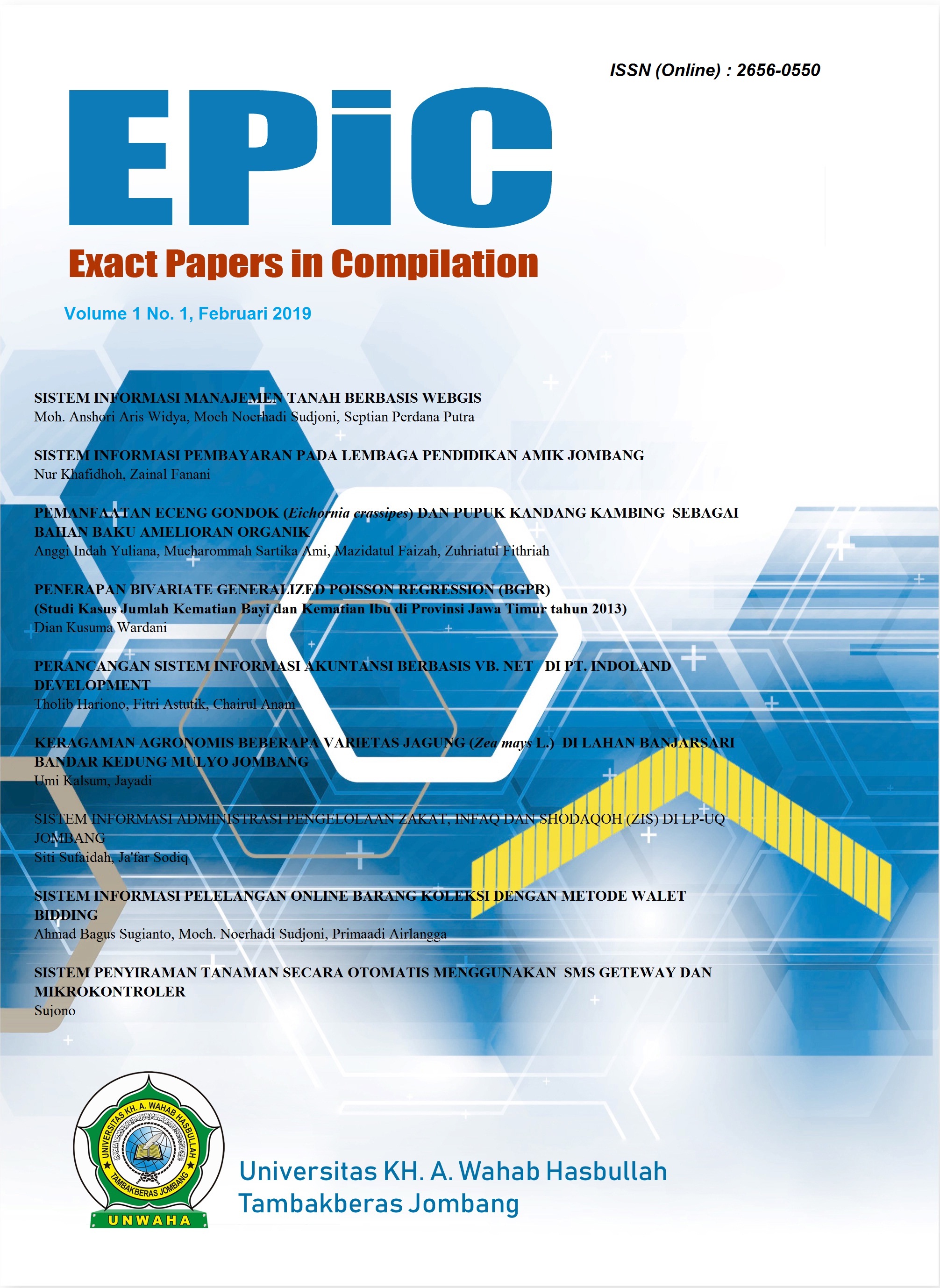PEMANFAATAN ECENG GONDOK (Eichornia crassipes) DAN PUPUK KANDANG KAMBING SEBAGAI BAHAN BAKU AMELIORAN ORGANIK
DOI:
https://doi.org/10.32764/epic.v1i1.67Keywords:
Ameliorant, Goat manure, Organic, Water Hyacinth PlantsAbstract
An experiment was conducted to determine the potential of goat manure and water hyacinth plants (Eichornia crassipes) as a source of organic material (ameliorant) to improve the quality of agricultural land. Water hyacinth plants and goat manure are used as raw material for making ameliorants with various compositions, namely: 100% goat manure, 75% goat manure + 25% goiter, 50% goat manure + 50% water hyacinth, 25% manure goat + 75% water hyacinth, and 100% water hyacinth which is brooded with a time variation of 2 weeks, 4 weeks, 6 weeks and 8 weeks. The results showed that ameliorant with a high composition of goat manure had better physical quality than ameliorant which was dominated by water hyacinth. The chemical analysis showed the levels of macro nutrients (N + P2O5 + K2O) in the treatment 75% goat manure + 25% water hyacinth in 4 weeks of composting fulfilled the standard solid organic fertilizer required by Regulation of the Minister of Agriculture No. 70 of 2011 which is above 4%, while the treatment of 100% goat manure only meets the standard soil improvement material because the levels of macro nutrients (N + P2O5 + K2O) are less than 4%.
References
Handayanto, E. dan Hairiah, K. 2007. Biologi Tanah: Landasan Pengelolaan Tanah Sehat. Pustaka Adipura. Yogyakarta. pp 16 – 90.
Hartatik, Wiwik, dan L. R. Widowati. 2006. Pupuk kandang. http://balittanah.litbang.pertanian.go.id/ind/dokumentasi/lainnya/04pupuk%20kandang.pdf Diakses tanggal 13 Januari 2019
Joedodibroto, R. 1983. Prospek Pemanfaatan Eceng Gondok dalam Industri Pulp dan Kertas. Berita Selulosa 29(1): 3 - 7
Kurnia, U., Sudirman, dan H. Kusnadi. 2005. Teknologi rehabilitasi dan reklamasi lahan terdegradasi. Hlm 141-167. Dalam Teknologi Pengelolaan Lahan Kering Menuju Pertanian Produktif dan Ramah Lingkungan. Pusat Penelitian Tanah dan Agroklimat. Badan Litbang Pertanian.
Novizan. 2002. Petunjuk Pemupukan yang Efektif. Agromedia Pustaka. Jakarta. p 113.
Peraturan Menteri Pertanian No. 70 Tahun 2011. 2011. http://perundangan.pertanian.go.id/admin/file/Permentan-70-11.pdf. diakses tanggal 9 Januari 2019
Rahmawanti, Novi dan Novrian Dony. 2014. Pembuatan Pupuk Organik Berbahan Sampah Organik Rumah Tangga Dengan Penambahan Aktivator Em4 Di Daerah Kayu Tangi. Jurnal Ziraa’ah, 39 (1):1-7
Sastiono, A. dan Suwardi. 1999. Pemanfaatan Zeolit Alam untuk Meningkatkan Kesuburan Tanah. Disampaikan pada Seminar Pembuatan dan pemanfaatan Zeolit
Agro untuk Meningkatkan Produksi Industri Pertanian, Tanaman Pangan dan Perkebunan. Departemen Pertambangan dan Energi, Direktorat Jenderal Pertambangan Umum. Bandung, 23 Agustus 1999.
Setyorini, Diah, Rasti Saraswati, and Ea Kosman Anwar. 2006. 2. KOMPOS. http://www.academia.edu/download/32258117/pupuk2.pdf . Diakses tanggal 9 Januari 2019
Syekhfani. 1997. Hara-Air-Tanah-Tanaman. Jurusan Tanah FP-UB. Malang. p177.
Winarso, S. 2005. Kesuburan Tanah-Dasar Kesehatan dan Kualitas Tanah. Gava Media. Yogyakarta. pp. 269






